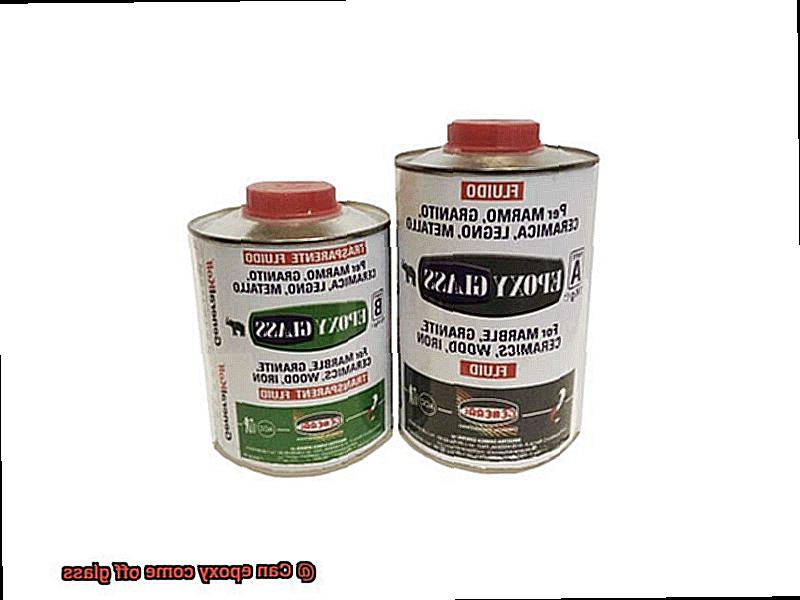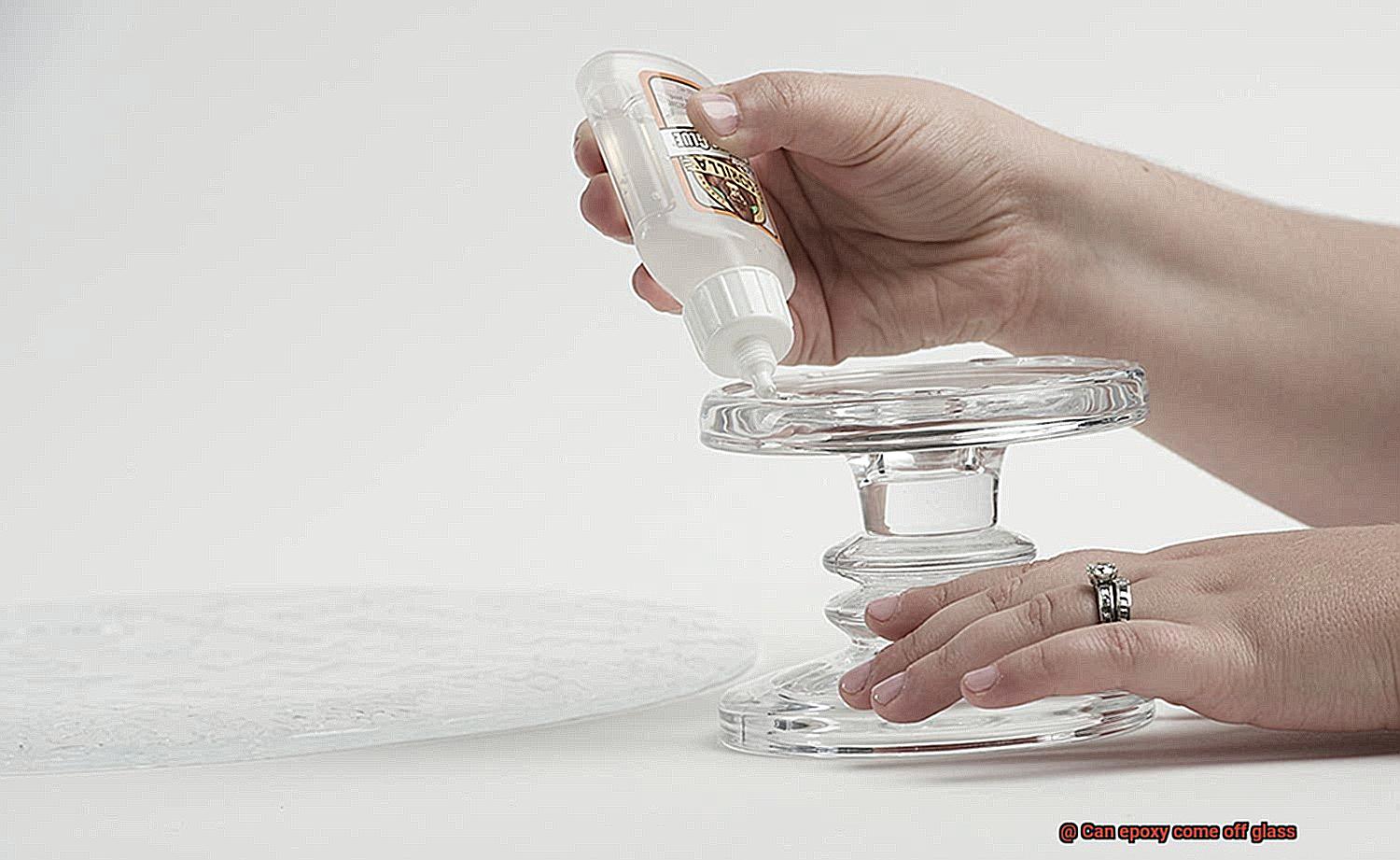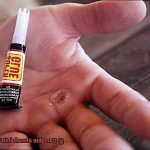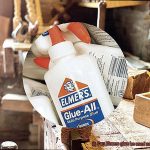Have you ever tried to remove epoxy from glass? If so, you know it’s not a walk in the park. While epoxy is an excellent adhesive for glass surfaces, getting it off can be a daunting task. But fear not. In this blog post, we’ll explore the question of whether or not epoxy can come off glass.
First things first, let’s talk about the different types of epoxy and their properties. Some epoxies are more difficult to remove than others, depending on their chemical composition and curing time. Factors such as temperature and humidity can also affect how easily epoxy can be removed from glass.
Now, let’s get down to business. Removing epoxy from glass will require some patience and elbow grease. There are various methods you can use, including scraping with a razor blade or using solvents like acetone or alcohol. However, keep in mind that these methods may not work for everyone and could potentially damage the glass surface.
So what’s the verdict? Can epoxy come off glass? The short answer is yes, but it won’t be easy. It largely depends on the type of epoxy and how long it has been on the glass surface.
So, working with epoxy and glass can be a match made in heaven, but removing unwanted epoxy can be a challenge. With this blog post as your guide, you’ll have a better understanding of how to tackle this tricky task if it ever comes up.
Can Epoxy Come Off Glass?
Contents
- 1 Can Epoxy Come Off Glass?
- 2 The Benefits of Removing Epoxy from Glass
- 3 The Challenges of Removing Epoxy from Glass
- 4 Heat Gun or Hairdryer Method for Removing Epoxy from Glass
- 5 Solvent Method for Removing Epoxy from Glass
- 6 Safety Precautions When Using Heat or Solvents to Remove Epoxy from Glass
- 7 Professional Help for Removing Stubborn Epoxy from Glass
- 8 Conclusion
Epoxy is a remarkable adhesive that is renowned for its strength and durability. It’s commonly used to bond glass to various materials, but sometimes you may need to remove it from glass surfaces. The question is, can epoxy come off glass? The answer is yes, but it can be a daunting task that requires some effort, patience, and proper equipment.
The key to successfully removing epoxy from glass is understanding its properties. Different types of epoxies have varying degrees of adhesion and curing times, which can affect how easily they can be removed. Some epoxies cure faster and harder than others, making them more challenging to remove.
Another critical factor to consider is the age of the epoxy. If the epoxy is still fresh, it may be easier to remove than if it has already cured and hardened. Therefore, it’s crucial to act quickly before the epoxy fully cures.
There are several methods you can use to remove epoxy from glass. Here are a few:
- Heat: Using a heat gun or hairdryer to soften the epoxy is one of the most effective methods. Apply heat directly to the epoxy for a few minutes until it becomes pliable, and then use a plastic scraper or credit card to gently scrape away the softened epoxy.
- Solvents: Using solvents like acetone or rubbing alcohol is another popular method for removing epoxy from glass. Soak a cloth in the solvent and apply it directly to the epoxy. Let it sit for several minutes and then gently scrape away the softened epoxy with a plastic scraper or credit card.
- Mechanical means: If all else fails, mechanical means like sanding or grinding may be necessary to remove stubborn epoxy from glass surfaces.
It’s essential to note that both methods require caution and proper safety equipment such as gloves and eye protection. Moreover, they may not work on all types of epoxies or in all situations.
In some cases, you may need to seek professional help for removing stubborn epoxy from glass surfaces. A professional glass cleaner or restoration company may have specialized tools and techniques for safely and effectively removing tough epoxy.
The Benefits of Removing Epoxy from Glass
If you’re looking to enhance the appearance and functionality of your glass surfaces, removing epoxy can be a game-changer. From automotive repair to home renovation, the benefits of removing this adhesive are vast.
Firstly, let’s talk about aesthetics. Epoxy can be incredibly stubborn to remove, but with the right tools and techniques, you can achieve a pristine appearance. This is particularly crucial in industries where maintaining a sleek and professional appearance is crucial. By removing epoxy from glass surfaces, you can restore the glass to its natural state and improve its overall look.
But it’s not just about looks. Removing epoxy from glass surfaces can also increase functionality. Epoxy can create a hard and inflexible surface that is challenging to clean and maintain. By removing it, you can make the glass easier to clean and more resistant to scratches or other damage. This is especially important in areas with high foot traffic like public transportation where cleanliness and durability are paramount.
Another significant benefit of removing epoxy from glass is increased safety. Epoxy can create a slippery surface that can pose a hazard, particularly in areas with heavy foot traffic. Removing it eliminates this hazard and makes the surface safer for everyone who uses it.
The Challenges of Removing Epoxy from Glass

Whatever your situation may be, removing epoxy from glass poses several challenges that require expertise and finesse.
One of the major challenges of removing epoxy from glass is the risk of damaging the delicate surface. Glass is a brittle material that can easily crack or chip if not handled with care. Therefore, it’s crucial to exercise caution when attempting to remove epoxy from glass, especially if it’s thin or has intricate designs.
Another challenge is finding the most suitable method for removing epoxy. While there are several methods available for removing epoxy from glass, not all of them are suitable for every situation. For instance, using heat to soften the epoxy may work for some types of glass but could cause damage to others.

Moreover, removing epoxy from glass is a time-consuming process that requires patience and persistence. It may take multiple attempts and different methods before achieving success in removing all traces of the adhesive. This can be frustrating, especially if you have a large surface area to clean.
To make the process easier, it’s essential to take precautions to protect the glass surface and choose the appropriate removal method for optimal results. Here are some tips to keep in mind:
- Use protective gear such as gloves and goggles while handling chemicals or tools.
- Test the removal method on a small inconspicuous area before proceeding with the entire surface.
- Be patient and allow enough time for each removal attempt to work before moving on to the next one.
- If all else fails, seek professional help to avoid causing any irreversible damage.
Heat Gun or Hairdryer Method for Removing Epoxy from Glass
If you’re struggling to remove epoxy from glass surfaces, the heat gun or hairdryer method is a popular and effective technique. This method involves using heat to soften the epoxy, making it easier to remove without damaging the glass. However, it’s important to approach this method with caution and take proper safety measures as the heat can cause glass to crack or shatter.
To start, gather all the necessary equipment, including a heat gun or hairdryer with adjustable temperature settings, protective gear such as gloves and eye protection, and a scraper or razor blade for removing the softened epoxy. Before beginning, test the heat on a small area to ensure that it doesn’t cause any damage to the glass.
Once you’re ready to begin, set your heat tool to a low temperature and hold it about 2-3 inches away from the epoxy. Move the heat tool around in circular motions until the epoxy starts to soften. It’s essential not to overheat or focus the heat in one spot for too long as this could lead to damage to the glass surface.
After the epoxy has softened, take your time and use a scraper or razor blade to gently remove the softened material. Work slowly and with care to avoid damaging the glass surface. You may need to repeat this process several times until all of the epoxy is removed. Once you have successfully removed the epoxy, use a cleaning solution such as rubbing alcohol or vinegar to clean any remaining residue from the glass surface.
It’s important to note that while this method is effective, it may not be appropriate for all types of epoxy. If you’re unsure about whether this method is suitable for your specific type of epoxy, it’s recommended that you consult with a professional before attempting any removal techniques.
Solvent Method for Removing Epoxy from Glass
Removing epoxy from glass can be a frustrating task, and without the right approach, it may seem impossible. Luckily, there is a tried and true method that experts swear by: the solvent method. This method involves using chemicals that can dissolve the epoxy and make it easier to remove from the glass surface. Let’s take a closer look at how you can use this method to achieve a flawless result.
Firstly, it’s important to determine which solvent to use based on the type of epoxy and glass being worked on. Acetone is one of the most commonly used solvents for removing epoxy from glass. It is a powerful solvent that can break down many types of adhesives, including epoxy. Simply apply acetone to the affected area and let it sit for a few minutes. Then, use a scraper or a razor blade to carefully remove the softened epoxy.
But what if you’re working with more delicate glass surfaces? Rubbing alcohol is another effective solvent for removing epoxy from glass. It is less harsh than acetone and may be a better option for more fragile glass surfaces. All you need to do is soak a cloth with rubbing alcohol and apply it to the affected area. Let it sit for a few minutes before using a scraper or razor blade to remove the softened epoxy.
It’s important to note that some solvents may damage certain types of glass, so it’s always best to test them on a small inconspicuous area before applying them to the entire surface. Other solvents that can be used for removing epoxy from glass include paint thinner, mineral spirits, and vinegar.
As with any chemical process, safety should always be top of mind when working with solvents.
Always wear gloves and work in a well-ventilated area to avoid inhaling fumes.
Safety Precautions When Using Heat or Solvents to Remove Epoxy from Glass
Removing epoxy from glass may seem like a daunting task, but with the right tools and safety precautions, it can be a breeze. Whether you plan to use heat or solvents to remove epoxy, it is essential to take proper safety precautions to avoid any accidents or injuries.
When using heat, make sure to wear protective gloves and goggles at all times. A heat gun or hairdryer can be used to soften the epoxy, but it is crucial to keep the heat source moving and not hold it in one spot for too long. This will prevent the glass from cracking, which can lead to a bigger problem. Remember that safety gear is not optional when working with heat. It’s a must.
Using solvents such as acetone or rubbing alcohol can also help dissolve epoxy from glass. However, it is crucial to follow instructions carefully and use the solvent in a well-ventilated area while wearing protective gear. It is also important not to use too much solvent, as this can damage the glass surface. Always observe caution and avoid any unnecessary risks.
Once you have removed the epoxy, proper disposal of any used solvents or materials is crucial. Pouring them down the drain or throwing them in regular trash can harm the environment and potentially cause health hazards. Check with local regulations for proper disposal methods, and make sure to follow them strictly.
Professional Help for Removing Stubborn Epoxy from Glass
Removing stubborn epoxy from glass can be a daunting task. DIY methods such as using a razor blade or sandpaper can cause damage to the glass surface. When dealing with delicate glass or particularly stubborn epoxy, seeking professional help is the best option.
Professional help for removing epoxy from glass involves using specialized tools and techniques that are safe for the glass surface. One of the most common methods used by professionals is the use of a heat gun or infrared heater to soften the epoxy, making it easier to remove without causing damage to the glass. Chemicals specifically designed to dissolve and remove epoxy without harming the glass are also used.
It’s important to choose a reputable and experienced service provider when seeking professional help. Research potential service providers, read reviews, and ask for references before committing to a service. Not all professionals have experience with removing epoxy from glass and may cause more harm than good.
Prevention is key when it comes to avoiding stubborn epoxy on glass surfaces. Protective measures such as masking tape or silicone barriers can prevent unwanted epoxy from spreading onto the glass surface. Properly cleaning and preparing the glass surface before applying epoxy can also help prevent stubborn residue from forming.
9WCgiS5gxa0″ >
Conclusion
In conclusion, removing epoxy from glass surfaces can be a daunting task that demands patience, proper equipment, and safety measures. The type of epoxy used and the duration of its curing process are critical factors that influence the ease of removal. While a variety of methods exist for eliminating epoxy from glass surfaces, not all may prove effective for every individual or situation.
Popular techniques for removing epoxy from glass include heat application or the use of solvents such as acetone or rubbing alcohol. However, it’s important to exercise caution when utilizing these methods to avoid damaging the delicate surface.
The advantages of removing unwanted epoxy from glass are numerous, including enhancing aesthetics, increasing functionality, and improving safety. It’s essential to take precautions to safeguard the glass surface and choose the appropriate removal method for optimal results.
When dealing with particularly stubborn epoxy or fragile glass surfaces, seeking professional assistance is highly recommended. Additionally, prevention measures such as masking tape or silicone barriers can help prevent unwanted epoxy from spreading onto the glass surface.
By following this guide as your reference point, you’ll have a better understanding of how to tackle this challenging task if it ever arises.






